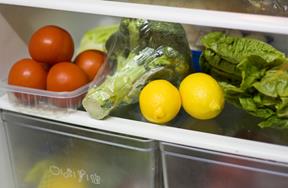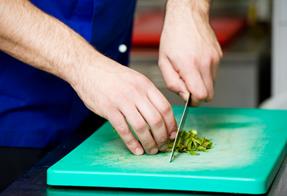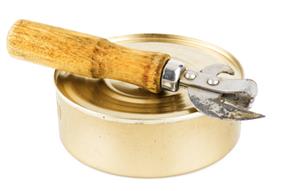Germs Busters: It’s time to put on your cleaning gear and wipe out germs in the kitchen
Maintenance & Repair5 minutes read
6451 views
6451 views
It’s easy to point accusing fingers at the bathroom when one is probed about the dirtiest place in a household. The fact is the kitchen is far more inhabited with germs than any other areas in a home, especially if it is a bustling one.
It is however not all that surprising considering the amount of activity that goes on in the kitchen; from whipping up three meals of the day and the subsequent washing up, to snooping around for snacks in the fridge.
Before you start sanitizing every nook and cranny of the space fervently though, we suggest that you first take a look at the sources and hiding spots for these nasty germs – and then practice the simple ways to combat them.
The source of germs in the kitchen?
Sponges at the Sink
We use a sponge to soak up all sorts of
grime and for many other cleaning duties. These sponges are left at the sink,
making it the perfect breeding spot for bacteria.
The vicious cycle continues, as this very
same sponge that’s teeming with the nasties, is then used to wipe countertops
and dishes over and over again.
Pop the used sponge into the microwave or
boil it for a couple of minutes to eliminate lurking germs. The best way though is to replace the kitchen sponge as frequently as necessary.

Refrigerator Produce Drawer
Research based on swab samples from top and
middle shelves, meat and poultry drawers, veggie bins as well as bottom shelves;
concluded that the vegetable bins were the most contaminated, followed by the bottom
shelves and meat drawers.
Thus, it is wise, to wash, and sanitize those
compartments regularly with detergent mixed with warm water. Combine one
teaspoon of unscented bleach with one cup of water, and leave the bins flooded
for ten minutes. Rinse the bins after and leave it to dry.
Handles
Handles get the most direct contact as
compared to the other fittings within the kitchen. These include those knobs
and pulls on your cabinets, as well as the handles on your fridge, oven, and
microwave.
Remember to run your warm soapy sponge or
paper towel over these at the end of every meal to eliminate their potential as
bacteria breeding grounds.

Plastic Cutting Boards
True to its namesake, the cutting board is
subject to deep grooves and gouges due to daily use. Lapsing to clean it
thoroughly after each use could lead to dire consequences such as
cross-contamination. Consider a separate board for your meat and vegetables,
and ensure that you lather them up with hot soapy water for hygiene purposes.
Despite a thorough clean, studies have proved
that a plastic board leaves more bacteria behind as opposed to a wooden one.
Unlike wood, plastic stays wet for a longer time and provides the right
environment for bacterial survival. Wood also boasts antibacterial agents that
retard its proliferation.

Can Openers
Chances are, you might be guilty of keeping
the can opener immediately into the drawer without rinsing it after each use. This
can opener will collect food debris over time and will become a thriving spot
for germs.
Rinsing the can opener under running water is
not sufficient to remove the lodged remnants. As it is a piece of essential
equipment in the kitchen, be sure to disinfect your can opener thoroughly before
placing it into the drawer.
This crucial step will protect you and your
family from any food-borne illnesses.
Back to Basics
A change in the right direction – hand-washing – is always good.
To achieve a germ-free environment in a kitchen, it begins with the necessary habit of hand-washing. Apart from lathering your hands with warm soapy water before you start preparing food, it is also best to wash your hands in between the preparation of other food types too.
For example, once you’ve got the chicken roasting in the oven, practice washing your hands first before you start chopping the vegetables.
Recommendations
Some of us might grow up having meals on a
table in our kitchen. It was the place where we had our meals. Almost all meals.
We might not realize it, but more and more are forgoing this ‘table’ and had decided
to install a kitchen island instead.
This part of the article is not attempting
to justify the need to install an expensive-looking kitchen island, but instead,
it will list down, albeit briefly, the benefits of a kitchen island.
The kitchen island is the hub or a nucleus
of a home. It draws occupants of the house around it, and more so if food is
served. It encourages friends and family to gather, and they can either sit or
stand to allow for more casual interaction.
Let’s briefly take an example of the household
favorite – the granite kitchen island. The price of granite might seem pricier
compared to other materials, but it is the best return on your kitchen
investment.
Practically, granite does not need
maintenance, so it is more affordable than wood or steel. Granite can get its
real shine with basic cleaning methods – soap and water!
On the same vein, it might not be possible
to achieve an utterly bacteria-free kitchen, but you can make this part of the
house, the kitchen, a cleaner and more comfortable place for you and your loved
ones.
And with a granite kitchen island that also
comes with a charming visual appeal, it will feature excellently in your
kitchen. It will not go out of style and gives any kitchen a refreshing and
clean personality.
Stone Amperor: 100% Unbiased Advice & The Widest Range of Countertops
Request for quotes and we'll match you with a selection of Interior Designers!
Previous
Renovation Contractor Tips


 Sign Up with Google
Sign Up with Google

.jpg)
